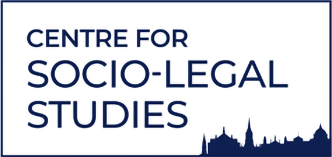
Ceding Authority: Reflections on the Value of Unstructured Interviewing

This blog post looks at a methodology which is often neglected in discussions about gathering qualitative data in socio-legal circles in favour of the ubiquitous semi-structured interview. Within the social sciences there has been much discussion of the structured or semi-structured interview but the unstructured interview is often marginalised. Research on narrative interviewing is however urging the social science to develop new theories, methods, and ways of talking or questioning established dualisms between self and society and interviewee and interviewer. It goes without saying that the completely unstructured narrative interview is almost impossible. Even in the most minimal of interventions the interviewer is expected to tell the interviewee enough about the themes of their project to elicit informed consent and to begin the interview with an opening question. As the interview progresses interviewees will be prompted and encouraged to speak by even the most cursory non-verbal cues such as affirmatory nods, smiles, and expressions of sympathy. Moreover, the interviewer provides an audience that plays a part in the sort of performance rendered even if they say very little.
The unstructured interview comes into its own in situations in which we know very little about a field or how something is understood and experienced. It provides opportunities to generate narratives constructed on the interviewee’s terms while recognising the importance of the cognitive process through which people organise experience into meaningful episodes. Far from a mainstream method in the social sciences, it has nonetheless long been recognised that naturally occurring stories are one of the primary ways in which human experiences are made meaningful. Narratives are present in myth, fable, novellas, epic tragedy, mime, cinema, and comics across eras and cultures. Underpinned by very different methodological foundations to positivistic approaches to the study of law and legal phenomena, a focus on the production of interviewee-led narratives is becoming increasingly popular within the social sciences. Recent examples of this approach can also be found in the flourishing field of narrative criminology.
Eliciting data through unstructured interviews assumes that events do not have a natural narrative structure of their own that can be captured in pre-determined questions but only come into being through reflection, ordering, and attempts to understand. At times narrative structure will be in place before the social science interview is conducted as a result of frequent rehearsals in discussion with other people. In other instances, the interviewer will witness it coming into being in the course of the interview as the interviewee imposes order on experience and understanding. This approach has important implications for how we do research. In a socio-legal context, Ewick and Silbey’s pioneering work on how people talk about law has also demonstrated the value of listening rather than structuring. Perhaps most importantly it has stressed the use of stories in helping to frame research questions and develop inductive theories. This approach to interviews seems particularly well suited to remaining open to surprise or providing spaces for stories that lie in opposition to the ones we might be socialised to expect. Narratives can function to reveal the ways in which hegemony is sustained, but it has been argued that they can also subvert accepted ways of thinking about law and to reveal perspectives on legal worlds that have been flattened or silenced in doctrinal scholarship. In this sense, lack of structure opens up particularly fruitful possibilities for producing new or counter intuitive ways of seeing or thinking.
Prompting narratives or storytelling through relatively unstructured interviews is of value because of the focus it places on the interviewee. It might be argued that for socio-legal scholars who seek empirically informed, ‘bottom-up’ accounts of experiences of the legal system, it may not only be more appropriate, but also more ethical to privilege the stories that research subjects choose to tell. Key questions for any researcher to pose in this context are whether they consider themselves or the interviewee to be the expert and how we mitigate against the danger of imposing an objectified, Western, gendered, class, or ethnically specific concept on research subjects. The notion of sovereignty in the interview remains critical to this approach. Ceding control to the interviewee to tell a story in the way that they see fit and to raise issues they consider important, fundamentally changes the dynamics of interviews in which social scientists are typically expected to manage structure. Indeed, minimising the influence that the interviewer has on the way in which stories are produced can be said to require the researcher to position the interviewee as expert.
This approach has a number of implications for socio-legal research. It means that while the interviewer might open-up the interview by posing a general question, they must cede authority to the interviewee to structure their account in the way that they see fit. By way of example, my own interviews with victims of medical accidents typically started with a very general question about what the nature of the issues they had with a local hospital. Initially intended as a ‘warm up’ question it soon became apparent that this general and open question was generating a lot of unanticipated data, with responses frequently taking up to an hour. Characterisation of this behaviour as ‘going off on a tangent’ were soon abandoned as it was soon realised that rich and nuanced data was being offered up unprompted.
Stories produced in interviews can never be entirely personal as they often bear a strong relationship to other stories that are ‘out there’. Narratives are shaped by historical, social, cultural, political, and institutional contexts and constrained by conventions about pace, content, and performance. Myths, epics, and storytelling rely on traditions or patterns that sit on a temporal range that is prevalent in a particular culture. Stories told to researchers may have been rehearsed and constructed around claims and representations that allow the interviewee to present themselves in ways that are considered legitimate or disruptive depending on the purpose or strategy of the story. But it is argued that the complexity of storytelling, its incoherence, contradictions, and ambiguities can serve to reveal fissures that allow interviewees to recuperate individual and social agency.
(This blog post is based on: Mulcahy, L., Rossner, M. and Tsalapatanis, A., 2021. It’s about time: investigating the temporal in socio-legal studies through unstructured interviews. Journal of Law and Society, 48, pp.S104-S117.)

